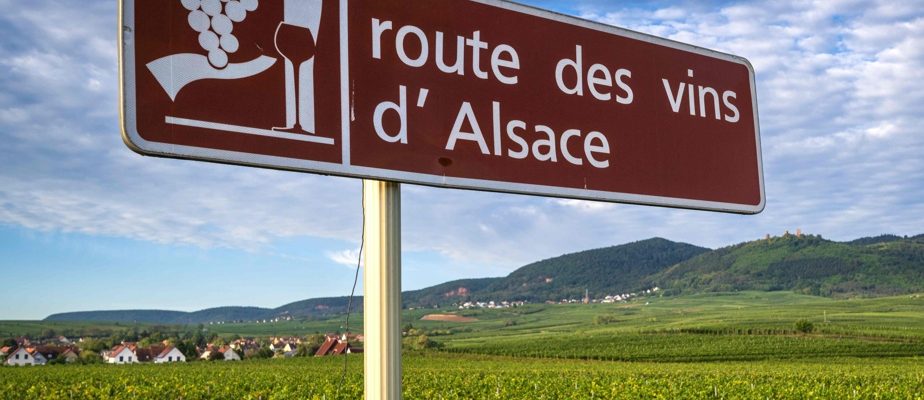(Goxwiller) It unfurls its colors over 170 kilometers, red and gold in the fall. For 70 years it has been winding between hillsides and villages, the Alsace Wine Route, in eastern France, remains a benchmark for wine tourism, while adapting to the digital age.
The Alsace Wine Route is one of the oldest in France and also one of the busiest, after the vineyards of Bordeaux and Champagne. It attracted 7.7 million visitors in 2022, 45% of whom were foreigners if we count nights spent in the vineyard in the broad sense.
In his village of Goxwiller, Raymond Kœnig proudly shows the cellar and the enormous tuns (giant barrels of 10,000 liters) which have contained the family harvest since 1889.
The Wine Route, “it was a good idea, that’s for sure,” says the man who continues to harvest grapes at the age of 84 and remembers the creation of the tourist route in 1953. “It was a novelty that brought us really liked it. It is still an image of Alsace, the Wine Route, a tourist image which brings us the world, which makes the region known.

PHOTO PATRICK HERTZOG, AGENCE FRANCE-PRESSE
Christophe Kœnig, his father Raymond and his son Mateo
At his farm taken over by his son Christophe, a Parisian couple stopped for their annual visit to Vins Kœnig, from where they usually leave with four to six cases.
“The problem with the Wine Route is that it is immensely long. You have to choose: in any village, there are 10 winegrowers who offer you a taste,” comments Jean-Louis Meyer, 69, putting down his glass. “So we always go to the same places.”
Yoga in the vineyards
After the road for cars, the route has doubled as a cycle route for ten years, and a pedestrian version should see the light of day next year.
“She is a great lady who has not aged: she is constantly renewing herself,” says Nathalie Kaltenbach, president of Alsace destination tourism (ADT).
In terms of innovations: yoga sessions in the vineyard, Segway rides or even wine painting workshops, with the idea of convincing visitors to stay long-term between Vosges and the Rhine.

PHOTO PATRICK HERTZOG, AGENCE FRANCE-PRESSE
For winegrowers, cellar sales “are of great interest: we do without an intermediary,” underlines Philippe Bouvet, marketing director of the Interprofessional Committee for Alsace Wines (Civa). “It’s a very interesting margin vector.”
According to him, Alsatian wine growers achieve around a quarter of their turnover through direct sales to their visitors, a “much higher” ratio than in the rest of France.
The other side of the coin: the popularity of the Wine Route has created “a form of wait-and-see attitude” among certain winegrowers, who tend “to wait for the customer to arrive,” he observes.
” Crazy ”
This is certainly not the case for Céline and Yvan Zeyssolff, who transformed their Gertwiller farm into an immersive museum, which has become almost essential for visitors from across the Atlantic.
“When we started wine tourism 25 years ago, people thought we were crazy,” says Yvan.
His estate sees entire busloads of American tourists stopping after their cruise on the Rhine. Headphones in their ears and glasses in hand, they visit the cellar where a film telling the family history is projected on the barrels.

PHOTO PATRICK HERTZOG, AGENCE FRANCE-PRESSE
“People don’t just buy a bottle of wine, but also a story. We share our everyday lives with them,” observes the winemaker, whose sales “have exploded.”
In addition to the 20,000 annual visits to the cellar with tasting (16 euros per entry), the estate offers a grocery store, a tea room, a restaurant and a 28-bed gîte, currently being expanded.
The secret of success: “We managed to create visibility thanks to algorithms,” explains Céline Zeyssolff, whose website in French and English allows you to book your visit. “Unlike 20 years ago, people no longer stop by chance.”
In Goxwiller, the Kœnig family also intends to take full advantage of the digital economy: this is the ambition of Matéo, 18 years old, Raymond’s grandson, a viticulture student. “I have the blood of a wine grower, I am ready to take over the business. »
